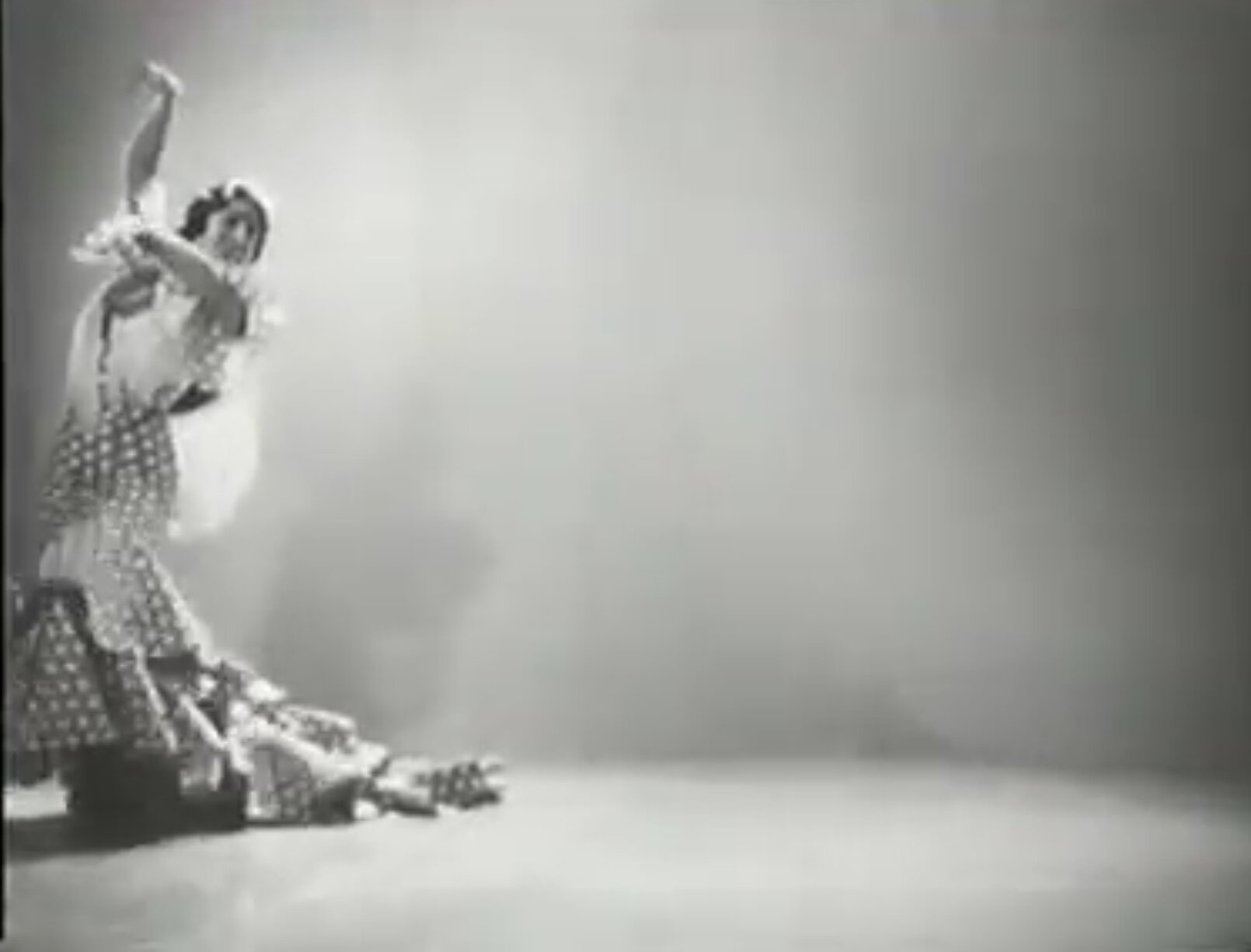The Spanish dancer La Argentinita and a golden age of Spanish arts: Women’s History Month in Dance, 2021.
Women’s History Month in Dance, 75, 76. 77, 78, 79, 80, 81, 82, 83, 84. La Argentinita (1898-1945), widely considered the greatest Spanish dancer of the era 1936-1945, was also close friend of the poet Federico Garcia Lorca: in they recorded ten Spanish songs (“Nana de Sevilla”, “En el café de Chinitas”, “Zorongo Gitana”, et al.) together, he at the piano, she singing and sometimes playing castanets.
The period up to 1935 may be seen as some kind of golden age for the Spanish arts - the Second Spanish Republic had taken power in 1931 - with the composers Mañuel de Falla and Joaquín Turina active, the nonpareil mezzo soprano Conchita Supervia in her prime, the superlative flamenco singer La Nina de las Peines in hers, Pablo Picasso having startled the world in successive stages of his modernist art for decades, Salvador Dalí commanding attention as a master of surrealism, and Lorca one of several radical writers. La Argentinita was not the first Spanish dancer to have been born in Argentina: originally named Encarnación López Júivez, she took the diminutive (“-ita”) in her stage name in respect to the slightly senior La Argentina (Antonia Mercé y Luque, 1890-1936), who had already done much to invent Spanish dance as a theatrical concert form. The Spanish Civil War did much to close this golden age, but so did a number of deaths in 1936: including those of Supervia (of childbirth), La Argentina (natural causes), and Lorca (assassination). Another death was that of the intellectual, playwright, and bullfighter Ignacio Sánchez Mejías, a married man with whom La Argentinita had sustained an important relationship for over nine years: although Lorca already feared in 1934 that La Argentinita would kill Sánchez for his affair with another woman (the French Hispanicist Marcelle Auclair), Sánchez was gored to death in 1934 by a bull.
La Argentinita danced on, running a company that included her sister Pilar Lopez. If you knew her first from the vivid 1938-1945 reviews of Edwin Denby, you note that - although he finds her the finest Spanish dancer of her day - he repeatedly refers to her as a “lady” and “charming” and “graceful”, compares her to the more dramatically intense Carmen Amaya, notes that other people find her too polite, and praises the detail of her footwork. None of his praise quite convinces you that you’d share his enthusiasm, or even that he fully feels it himself. Yet there are films of La Argentinita on YouTube that, like the recordings of her singing with Lorca, are thrillingly vivid while indeed being charming, less dramatically intense than Amaya, and abounding in neat, precise footwork. Watching her, you can’t quite believe Lorca or anyone else who knew her thought she might kill her bullfighter lover for cheating on her (with Amaya, you can), but that’s partly because she, La Argentinita, is joyous, sweet, ebullient. She also fascinates. The word “lady” doesn’t come to my mind as readily as it does to Denby’s; I mean that as a compliment. La Argentinita twists, bends, and turns within the high pressure of a phrase, and sometimes runs her hands through her hair. She’s a great virtuoso who gives you the impression she has by no means exhausted all her resources in any one dance; she’s so precise in the style of each dance that you’re aware how very multifaceted she is.
She fled Spain before the outbreak of civil war, took her dancers and musicians in international travels, and spent the years 1938-1945 in North America. When she died in 1945, López, Amaya, Rosario and Antonio were all causing sensations with their dancing in America, but it was her dancing that commanded greatest respect: she had made films and had presented a season at the Metropolitan Opera House. Just as Fred Astaire rode a musical-comedy wave that involved Irving Berlin, Cole Porter, Jerome Kern, Harold Arlen, and others, so La Argentinita rode a wave of great Spanish music, poetry, and art.
Wednesday 24 March









